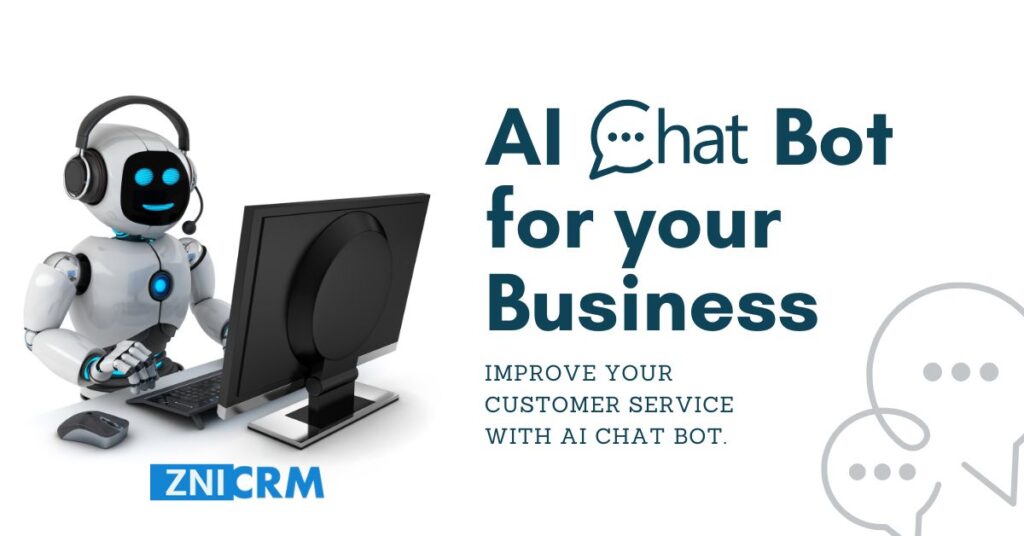
This essay highlights the challenges small businesses face with manual invoicing—lack of tracking efficiency, poor presentation, absence of value-added features, and the complexity of tax preparation. It emphasizes how invoicing software addresses these issues, improving tracking, offering professional templates, integrating extra features like diverse payment options, client management, expense tracking, and providing essential help with tax preparation. By adopting such a solution, small businesses can enhance operational efficiency, improve client relations, streamline tax processes, and foster growth, turning invoicing from a pain point into a strategic advantage.
In the fast-paced world of small businesses, effective and efficient invoicing practices are the lifeblood of daily operations. With most transactions occurring digitally, the need for a robust and streamlined invoicing process has never been more critical. Manual approaches to invoicing, while seemingly straightforward, can create a series of pain points that can negatively affect a business’s functionality and growth. Through the lens of several common challenges faced by small businesses, we will explore how invoicing software is not only beneficial but essential.
An accurate and efficient invoicing process can provide numerous advantages. It can lead to better cash flow management, increased professionalism, improved client relationships, and overall, a healthier business. However, despite these known benefits, some businesses continue to employ manual methods for their invoicing needs. They keep extensive paper records, perform arduous manual data entry, and chase payments without the aid of any automation. These actions not only consume valuable time but are also fraught with the possibility of human error and inconsistency.
Furthermore, as businesses grow and their operations expand, manual methods can quickly become overwhelming. A solitary missed invoice or a single miscalculated entry might not seem much in isolation, but they can snowball into more significant problems down the line, impacting cash flow, tax filing, and customer relations. This potential for error and oversight underscores the importance of considering automated invoicing solutions.
It’s critical to note that each small business has its unique needs and operational nuances. Therefore, the choice of invoicing software should align with these specific requirements. However, some universal pain points resonate across businesses, irrespective of their industry or size. These pain points form a compelling case for the adoption of invoicing software, and it’s these challenges that we will explore in detail in the subsequent sections of this article.
Our journey will take us through the burdens of manual data entry, the complexities of tracking invoices, the repercussions of delayed payments, the need for professional presentation, the benefits of additional features provided by software solutions, the role of invoicing in tax preparation, the pursuit of efficiency, and the importance of consistency.
Each of these pain points represents a facet of the invoicing process that can either enable success or become a stumbling block. By understanding these challenges and how invoicing software can help address them, small businesses can take a significant step toward improving their operations and bolstering growth. It’s not just about keeping up with the times but setting the pace for a more organized, efficient, and prosperous future.
Let’s delve into these pain points and see how the modern solution of invoicing software can help small businesses turn challenges into opportunities.
The Burden of Manual Data Entry
When discussing the intricacies of business operations, it’s crucial to recognize that each task, no matter how trivial it may seem, contributes to the overall functioning of the business. Manual data entry, an activity that is often relegated to the backburner, is one such task. To understand the burden of manual data entry, one needs to consider both the visible and invisible costs associated with it.
At first glance, manual data entry may appear as a simple, albeit time-consuming task. Businesses without a dedicated invoicing software often find their staff members juggling between different responsibilities, one of them being entering invoice data into spreadsheets or paper ledgers. Not only is this task laborious, but it also diverts valuable time and resources away from core business operations. In the dynamic environment of a small business, every minute counts, and spending substantial time on manual data entry can significantly affect the efficiency and productivity of the staff.
Additionally, the process of manual data entry leaves substantial room for human error. Even the most diligent staff member can make a mistake when entering invoice data. A single misplaced decimal or a wrong entry could potentially lead to considerable financial discrepancies. Not to mention, identifying and rectifying these errors can be a daunting task, often requiring the review of multiple invoices and records. Over time, such errors can accumulate, leading to financial inaccuracies, skewed business reports, and problematic audits.
The invisible costs of manual data entry manifest in terms of missed opportunities. While staff members are occupied with data entry, they might miss out on other essential tasks like client communication, strategic planning, or business development activities. This opportunity cost, although not immediately evident, can hamper the long-term growth of the business.
In contrast, adopting an invoicing software can alleviate the burden of manual data entry. These software solutions come equipped with automation capabilities, allowing businesses to generate invoices automatically based on the input data. This automation not only saves time but also significantly reduces the risk of human error. Additionally, the staff members freed from the task of data entry can focus on other critical business operations, thus improving overall efficiency and productivity.
Moreover, invoicing software also provides easy access to historical data, offering businesses the ability to track and analyze their invoicing patterns over time. This data accessibility can help businesses make informed decisions, forecast cash flow, and identify potential areas of improvement.
In conclusion, while manual data entry might seem like a manageable task, it carries hidden costs and potential errors that can affect a small business’s overall operations and growth. Adopting an invoicing software, on the other hand, offers a more efficient, accurate, and strategic approach to managing invoices, thereby easing the burden of manual data entry.
In the next section, we’ll delve deeper into another common pain point faced by small businesses – tracking invoices.
The Challenge of Tracking Invoices
With manual systems, the ability to keep track of various invoices—those paid, unpaid, or overdue—can be a considerable challenge. Relying on physical records or fragmented digital documents makes it incredibly hard to manage and follow the lifecycle of each invoice. The organization becomes exponentially more difficult as the number of clients and transactions grows. This lack of an effective tracking system can lead to missed payments, double billing, or even loss of critical financial data.
Missed payments are a common issue in small businesses without a proper invoicing system. Without an easy way to overview the status of all invoices, it’s straightforward for some to fall through the cracks. This can lead to cash flow disruptions and strained customer relationships as late payments get pushed even later, and missed invoices can lead to awkward conversations or loss of business.
Similarly, without an effective tracking system, double-billing becomes a possibility. If an invoice is mistakenly sent twice, it can create confusion for the customer and extra administrative work for your team to rectify the error. Not only does this waste time and resources, but it can also negatively impact the client’s trust in your business.
The challenge of tracking invoices also extends to keeping records for future reference. Accurate and accessible historical data is invaluable for a variety of reasons, including financial analysis, forecasting, tax purposes, and resolving disputes. When invoices are tracked manually, retrieving specific records can be time-consuming and difficult.
Invoicing software, on the other hand, provides a centralized and streamlined platform for invoice tracking. These digital systems automatically update the status of each invoice, providing real-time insights into which invoices have been paid, are due, or are overdue. Automated reminders can be set up for overdue invoices, reducing the chance of missed payments.
With a digital tracking system, all invoices are stored in one location, making it easier to retrieve past records. They can be searched by various parameters, such as date, client name, or invoice number. This not only helps in managing finances but also provides a clear trail of documentation for tax purposes or in case of audits.
The ability to analyze invoice data is another significant benefit of invoicing software. Businesses can easily identify trends, such as the most profitable months or clients who frequently delay payments. These insights can inform business strategies and decision-making.
In conclusion, the challenge of tracking invoices manually can have numerous negative implications, from missed payments and double-billing to loss of critical data. With invoicing software, businesses can easily monitor, manage, and analyze their invoices, leading to improved cash flow, more accurate financial records, and better decision-making.
In the next section, we’ll explore the impact of delayed payments and how invoicing software can help mitigate this issue.
Dealing With Delayed Payments
Delayed payments are a common, yet critical issue that small businesses face, with significant implications on their cash flow and sustainability. The manual process of issuing invoices, following up on them, and tracking payments received can be a slow one. Without an efficient system in place, payments can often get delayed, sometimes forgotten, causing a ripple effect on the financial health of the business.
Delayed payments can put unnecessary strain on a small business’s financial resources. They disrupt the predictability of cash flow, making it harder for the business to plan its future expenses and investments. When a business is unsure when its payments will arrive, it can lead to difficulties in managing operating costs, payroll, and other essential expenses. It may even affect the business’s ability to offer its services or products, causing a detrimental impact on its reputation and customer relations.
The reasons behind these delayed payments in manual systems are numerous. Invoices may not reach the client on time, or they might get lost amidst the myriad of emails that a client receives. Without a systematic reminder system, the responsibility falls on the business owner or the employees to manually follow up on unpaid invoices, a task that is not only time-consuming but also can be uncomfortable.
Invoicing software provides an elegant solution to these challenges. By digitizing and automating the invoicing process, payments can be expedited. Invoices are sent out promptly and can include various online payment options, making it easier for clients to pay immediately upon receipt. The chance of an invoice being overlooked or forgotten reduces significantly when the payment process is simplified.
Furthermore, invoicing software can automate follow-up reminders for unpaid invoices. Gentle, automated reminders can nudge the clients to make their payments without the need for awkward phone calls or emails. This not only makes the process more comfortable for both parties but also ensures that the task isn’t forgotten or delayed due to other pressing responsibilities.
In essence, dealing with delayed payments is a multifaceted problem with implications that go beyond mere financials. The time and effort spent on manual follow-ups, the discomfort of asking for payments, and the potential strain on client relationships are all pain points that small businesses grapple with. By integrating invoicing software, businesses can streamline their payment collection, improve cash flow predictability, and free up their resources to focus on other key aspects of their operations.
In the next section, we’ll look at the importance of professionalism and presentation in invoicing and how the right software can make a difference.
The Need for Professional Presentation
A business’s invoices are more than just requests for payment—they’re a reflection of the business itself. An invoice might seem like a mere transactional document, but it’s often one of the most frequent points of contact between a business and its clients. As such, the design, accuracy, and professionalism of invoices can significantly impact a business’s reputation and client relationships.
When businesses rely on manual invoicing methods, the results can often be inconsistent and unprofessional. Handwritten invoices can be hard to read and understand, and they lack the polished look that digital invoices offer. Even when using digital tools like word processors or spreadsheets, designing professional-looking invoices can be a time-consuming task. More importantly, with manual methods, it’s easy for mistakes to slip through—whether it’s a misspelled client name, incorrect figures, or an omitted tax calculation. These errors can damage a business’s professional image and can lead to disputes or delayed payments.
In contrast, invoicing software can significantly improve the professionalism and presentation of a business’s invoices. These platforms provide a range of customizable invoice templates that cater to different industries and branding preferences. Businesses can easily add their logo, contact details, and terms and conditions, creating a consistent, professional look across all their invoices.
Aside from aesthetics, invoicing software ensures the accuracy of every invoice. The software automatically calculates totals, taxes, and discounts, eliminating the risk of human error. This accuracy not only lends credibility to the business but also ensures the invoice complies with any relevant tax laws and regulations.
Another aspect of professional presentation is punctuality. Businesses that send out invoices promptly are seen as more professional and reliable. With invoicing software, businesses can automate their invoicing process, ensuring that invoices are sent out immediately upon the completion of a job or at predetermined intervals. This eliminates any delay that might occur due to manual processing and sends a positive message about the business’s efficiency and reliability.
In conclusion, the professionalism and presentation of a business’s invoices play a critical role in shaping its image and client relationships. Invoicing software allows businesses to design professional, accurate, and timely invoices, thereby enhancing their credibility and instilling trust in their clients.
In the next section, we’ll examine the value-added features of invoicing software and how they can benefit small businesses.
Value-Added Features of Invoicing Software
Invoicing software is more than just a tool to create and send invoices; it’s an all-encompassing solution designed to address the unique challenges of managing business finances. While we’ve discussed the solutions it offers to the primary pain points of manual invoicing, it’s equally important to highlight the additional features that these tools bring to the table. These value-added features can streamline operations, provide crucial insights, and drive growth for small businesses.
One such feature is the ability to accept a variety of payment methods. Today’s digital landscape offers a multitude of ways to transfer money, from credit cards and bank transfers to digital wallets and even cryptocurrencies. Invoicing software often integrates with various payment gateways, allowing businesses to accept these multiple payment methods directly through their invoices. This convenience can significantly speed up the payment process and improve customer satisfaction.
Next, invoicing software often includes a client management system or integrates with existing Customer Relationship Management (CRM) platforms. These systems allow businesses to maintain a database of their clients with information such as contact details, billing addresses, payment history, and more. This centralized storage of information ensures quick access to client details when creating new invoices, saving time and reducing the risk of errors.
Many invoicing software solutions also offer expense tracking features. These can be an invaluable resource for small businesses, helping them track their costs and understand their spending patterns. By linking expenses to clients or projects, businesses can gain insights into their profitability and make informed decisions about pricing and budgeting.
Moreover, invoicing software often includes detailed reporting and analytics features. These reports can provide an overview of the business’s financial health, detailing information such as revenue, outstanding payments, expenses, and more. Businesses can use these insights to identify trends, forecast future cash flows, and make strategic decisions.
Finally, many invoicing software platforms offer scalability. As a business grows, its invoicing needs become more complex. With manual invoicing, this growth can become a source of stress and confusion. However, invoicing software can easily adapt to changing business needs, handling an increased volume of invoices, offering additional features, and providing more storage space.
In conclusion, the value-added features of invoicing software extend beyond the basic function of invoicing. By offering a range of features such as multiple payment methods, client management, expense tracking, reporting and analytics, and scalability, these tools can significantly streamline operations, provide critical insights, and support the growth of small businesses.
In the next section, we’ll discuss the role of invoicing in tax preparation and how invoicing software can simplify this often complex process.
Simplifying Tax Preparation with Invoicing Software
One of the most daunting aspects of running a small business is managing taxes. The complexity of tax laws, the need for accurate record-keeping, and the consequences of mistakes can make tax preparation a significant source of stress. However, with the right invoicing software, much of this burden can be eased.
Without a dedicated invoicing system, maintaining accurate tax records can be a challenge. With invoices stored in various places, keeping track of all taxable transactions requires considerable effort and diligence. Furthermore, manual calculations of tax amounts on individual invoices leave room for error, and discrepancies in these calculations can lead to problems during tax audits.
Moreover, different products or services may be taxed at different rates, and tax rates can vary based on the client’s location, especially for businesses serving clients in different states or countries. Managing these variations manually can be complex and time-consuming. In addition, businesses need to generate detailed tax reports, showing all taxable income and paid taxes. Without an organized system, preparing these reports can be a laborious process.
Invoicing software addresses these challenges by automating and streamlining the tax preparation process. The software can automatically calculate and apply the correct tax rate to each invoice based on the provided parameters. This not only saves time but also eliminates the risk of calculation errors.
Furthermore, all invoices are stored in a centralized location, ensuring that no taxable transactions are missed. The software can generate detailed tax reports with a few clicks, providing a clear overview of the business’s taxable income and paid taxes. These reports can be invaluable during tax season, making it easier to fill out tax forms and providing documentation in case of an audit.
Invoicing software can also adapt to changing tax laws. As tax rates change or new tax laws are introduced, the software can be updated accordingly, ensuring that the business’s invoices always comply with the current regulations.
In conclusion, tax preparation is a complex task, but it’s an integral part of running a business. Mistakes in tax calculations or record-keeping can have serious consequences. However, with invoicing software, businesses can manage their taxes more efficiently and accurately. The automated calculations, centralized record-keeping, and easy report generation offered by invoicing software can make tax preparation simpler and less stressful.
The points discussed in this essay provide a comprehensive understanding of the challenges of manual invoicing and how adopting an invoicing software can address these challenges. As businesses strive to improve their operations, increase efficiency, and drive growth, integrating such a solution could be a significant step forward.
Conclusion
The world of small businesses is one that thrives on efficiency, precision, and professionalism. With so many factors demanding the attention of business owners, tasks such as invoicing can often take a back seat. However, as we’ve explored in detail throughout this article, the implications of poor invoicing practices can be profound, impacting everything from cash flow to client relationships and tax compliance.
While manual invoicing has its place, the challenges it presents are numerous and significant. Lack of tracking efficiency can lead to missed or delayed payments, impacting a business’s financial health. Unprofessional presentation can erode trust and create confusion, and the lack of value-added features and the complex task of tax preparation can increase the workload on already stretched small business owners.
However, each of these pain points has a solution in the form of invoicing software. By integrating this technology into their processes, small businesses can turn invoicing from a pain point into a strategic advantage. From improved tracking and presentation to value-added features that streamline operations and offer insights, invoicing software is a tool that can empower businesses to operate more efficiently and professionally.
Moreover, the advantages of adopting invoicing software extend beyond the immediate benefits of streamlined operations and professional presentations. The ability to accept diverse payment methods caters to the evolving expectations of customers. Integrated client management systems make for smoother customer interactions, and detailed financial analytics enable informed business decisions.
In terms of scalability, invoicing software is an ally, ready to grow and adapt to a business’s changing needs. With flexible features and capacities, it can accommodate increasing invoice volumes and more complex operations as businesses expand.
Finally, invoicing software simplifies tax preparation—a task often dreaded by small business owners. By automating tax calculations and generating detailed tax reports, this tool can turn tax season from a source of stress to a manageable, routine process.
In the rapidly evolving digital landscape, small businesses need to leverage technology to streamline operations, improve efficiency, and drive growth. Invoicing software offers a simple, effective solution that addresses a range of pain points, making it a worthwhile investment for any small business. It is more than just a tool for creating invoices—it’s a comprehensive solution that can transform a business’s financial management, leading to improved cash flow, happier clients, and a healthier bottom line.
Invoicing is not just an administrative task—it’s a critical business process that plays a crucial role in a business’s success. By acknowledging the challenges of manual invoicing and embracing the benefits of invoicing software, small businesses can ensure that this process serves their growth and success rather than hindering it. As the saying goes, ‘Time is money.’ In the world of small business, saving time on invoicing means more time for growth and success.
Adopting invoicing software is a strategic decision—one that every small business should consider. It’s an investment in efficiency, professionalism, and growth. It’s an investment in the future of the business. And, as with any investment, the benefits are well worth the cost.



